- About Lily of the Valley
- Characteristics
- Cultivation and Care
- Propagation
- Lily of the Valley: A Fragrant Flower
- Fragrance
- Flowers
- Growing Conditions
- Care and Maintenance
- Propagation
- Conclusion
- History and Symbolism of Lily of the Valley
- Historical Significance
- Cultural Symbolism
- Modern Uses
- Cultivation of Lily of the Valley
- 1. Choosing a Location
- 2. Planting
- 3. Watering
- 4. Fertilizing
- 5. Pruning
- 6. Scattered Planting
- 7. Propagation
- 8. Common Pests and Diseases
- Choosing the Right Location
- Light
- Soil
- Climatic Conditions
- Protection
- Preparing the Soil for Lily of the Valley
- 1. Soil Type
- 2. Soil pH
- 3. Site Selection
- 4. Soil Preparation
- 5. Organic Matter
- 6. Mulching
- Care of Lily of the Valley
- Light
- Soil
- Watering
- Fertilization
- Dividing and Propagation
- Pests and Diseases
- Winter Care
- Watering and Moisture Requirements
- General Guidelines
- Watering Newly Planted Lily of the Valley
- Watering Established Lily of the Valley
- Rainfall Considerations
- Moisture Retention Techniques
- Conclusion
- Fertilizing and Mulching
- Types of Mulch
- Applying Mulch
- Propagation of Lily of the Valley
- 1. Division
- 2. Planting Seeds
- Questions and Answers:
- What are the ideal conditions for cultivating Lily of the Valley?
- Can Lily of the Valley grow in dry soil?
- When is the best time to plant Lily of the Valley?
- How do you propagate Lily of the Valley?
- Do lily of the valley plants need any special care?
- Can Lily of the Valley be grown in containers?
- Videos: How to Grow Lily of the Valley | Planting and Care Guide for Lily of the Valley
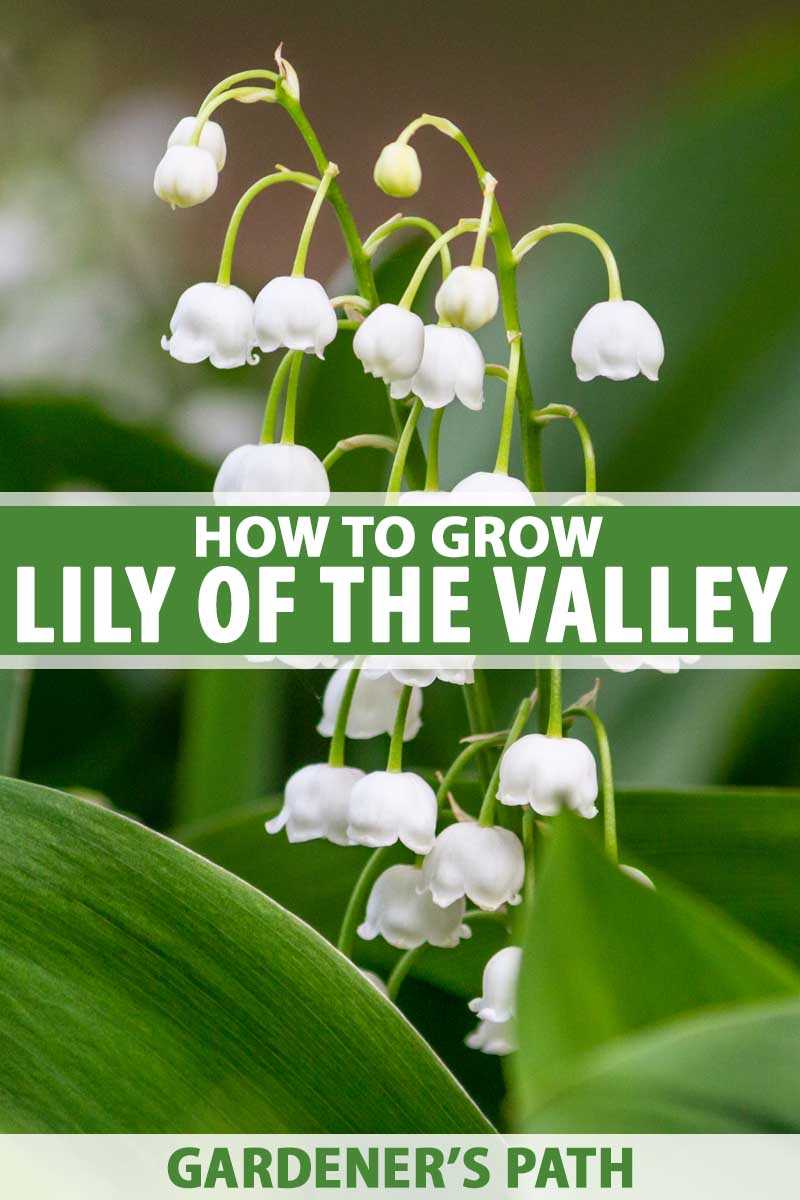
The lily of the valley, or Convallaria majalis, is a delicate and enchanting flower that is beloved by gardeners around the world. With its small, fragrant, bell-shaped blooms and lush green foliage, it adds a touch of elegance and charm to any garden or landscape. Cultivating and caring for these beautiful flowers requires a bit of know-how, but the effort is well worth it for the stunning display they provide.
To successfully grow lilies of the valley, it is important to choose the right location and provide the ideal growing conditions. These plants prefer partial to full shade and thrive in moist, well-draining soil. A location under trees or along a shaded border is ideal. Adding organic matter to the soil, such as compost or peat moss, can help improve drainage and fertility.
Once planted, lilies of the valley require regular watering to keep the soil consistently moist. They should be watered deeply but infrequently, allowing the soil to dry out slightly between waterings. Mulching around the plants can help retain moisture and suppress weed growth. It is also important to protect the plants from extreme heat and cold, as they are sensitive to temperature fluctuations.
Propagation of lilies of the valley can be done through division or by planting the pips, or small bulb-like structures, that develop on the plant’s rhizomes. Division should be done in early spring or fall, when the plants are dormant. The pips, which are typically harvested in the summer, should be planted in well-prepared soil to ensure successful growth. With proper care and attention, lilies of the valley can be propagated and grown to create a stunning display of these beautiful flowers in the garden.
About Lily of the Valley
Lily of the Valley, also known as Convallaria majalis, is a delicate and fragrant flower that is native to the temperate regions of the Northern Hemisphere. It is a perennial plant that belongs to the Asparagaceae family. Lily of the Valley is known for its bell-shaped white flowers and its sweet fragrance, which has made it a popular choice for gardens and bouquets.
Characteristics
Lily of the Valley has several distinguishing characteristics:
- The plant grows from rhizomes, which are underground stems that produce roots and shoots.
- The leaves are dark green and have an elliptical shape. They grow in pairs along the stem.
- The flowers are small, white, and bell-shaped. They grow in clusters on a stem that rises above the leaves.
- The flowers have a sweet fragrance that is often described as intoxicating.
Cultivation and Care
Lily of the Valley can be grown in a variety of garden settings, including shaded areas, woodland gardens, and rock gardens. Here are some tips for cultivating and caring for Lily of the Valley:
- Choose a location that receives partial to full shade, as direct sunlight may cause the plant to wither.
- Ensure that the soil is well-draining and rich in organic matter.
- Plant the rhizomes in early spring or early fall, spacing them about 6 to 8 inches apart.
- Water the plant regularly, keeping the soil moist but not soggy.
- Apply a layer of mulch around the plants to help retain moisture and suppress weeds.
- Fertilize the plant once a year in the spring with a balanced fertilizer.
Propagation
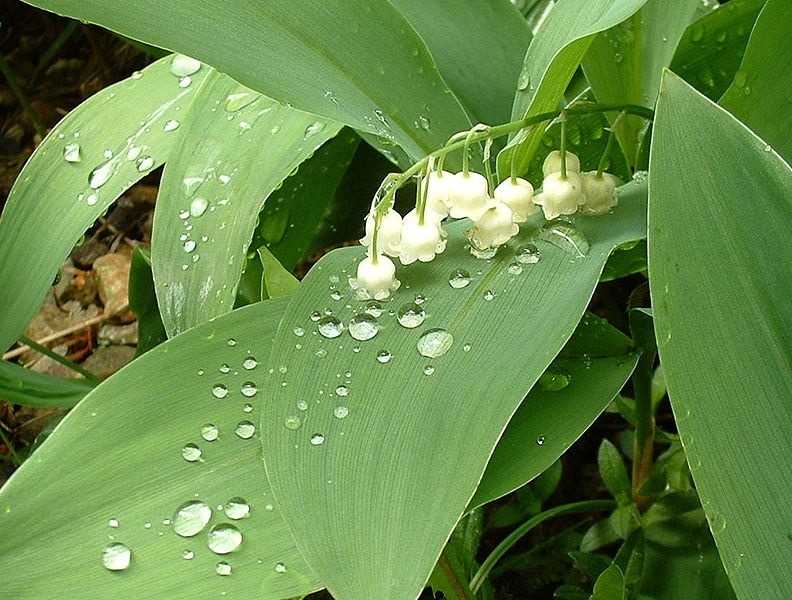

Lily of the Valley can be propagated through division or by planting the seeds. Here is a step-by-step guide for propagating this plant:
- In early spring or early fall, dig up the rhizomes from an established Lily of the Valley plant.
- Separate the rhizomes into smaller sections, ensuring that each section has at least one bud or shoot.
- Plant the rhizome sections in a prepared garden bed or container, following the cultivation and care guidelines mentioned above.
- Water the newly planted rhizomes thoroughly and continue to water them regularly.
- Within a few weeks, new shoots should emerge from the planted rhizomes.
| Aspect | Soil Type | Watering | Fertilizer |
|---|---|---|---|
| Partial to full shade | Well-draining, rich in organic matter | Regular, keeping the soil moist but not soggy | Once a year in the spring with a balanced fertilizer |
Lily of the Valley: A Fragrant Flower
The Lily of the Valley is a delicate and highly fragrant flowering plant that can add beauty and a wonderful scent to any garden. This perennial plant, scientifically known as Convallaria majalis, is native to the temperate regions of the Northern Hemisphere and is prized for its sweet fragrance and elegant, bell-shaped flowers.
Fragrance
One of the most notable characteristics of the Lily of the Valley is its intoxicating fragrance. The flowers release a sweet, delicate scent that is often described as a combination of floral and citrus notes. The fragrance is so beloved that it is often used in perfumes and candles, adding a touch of elegance and freshness to any scent.
Flowers
The flowers of the Lily of the Valley are small and delicate, with bell-shaped blooms that hang from a slender stem. They typically appear in late spring or early summer and come in shades of white or creamy white. These fragrant flowers are known to attract pollinators such as bees and butterflies, making them a beautiful and beneficial addition to any garden.
Growing Conditions
Lily of the Valley is a shade-loving plant that thrives in moist, well-drained soil. It prefers cool temperatures and is best suited for USDA hardiness zones 2-7. This plant can be grown in gardens, borders, or containers and is often used as ground cover due to its spreading habit. While it can tolerate some sunlight, it generally prefers partial to full shade.
Care and Maintenance
Lily of the Valley is relatively low-maintenance and requires minimal care once established. Here are some tips for caring for this fragrant flower:
- Water regularly to keep the soil consistently moist, but not waterlogged.
- Apply a layer of mulch to help retain moisture and suppress weed growth.
- Remove spent flowers to encourage continuous blooming.
- Divide the plants every few years to control their spread and maintain vigor.
- Monitor for pests and diseases, such as aphids or leaf spot, and take appropriate action if needed.
Propagation
The Lily of the Valley can be propagated through division or by planting the pips or rhizomes. Here is a step-by-step guide for propagating this fragrant flower:
- In spring or early fall, carefully dig up the plants or rhizomes.
- Separate the rhizomes or pips, making sure each division has some roots attached.
- Replant the divisions in a prepared site or containers, ensuring they are planted at the same depth as they were originally.
- Water thoroughly after planting and keep the soil moist until the divisions are rooted and established.
Conclusion
The Lily of the Valley is a beautiful and highly fragrant flower that can add a touch of elegance to any garden. With its sweet scent and delicate blooms, it is a favorite among gardeners and flower enthusiasts. By providing the right growing conditions and proper care, you can enjoy the beauty and fragrance of this lovely plant in your own garden.
History and Symbolism of Lily of the Valley
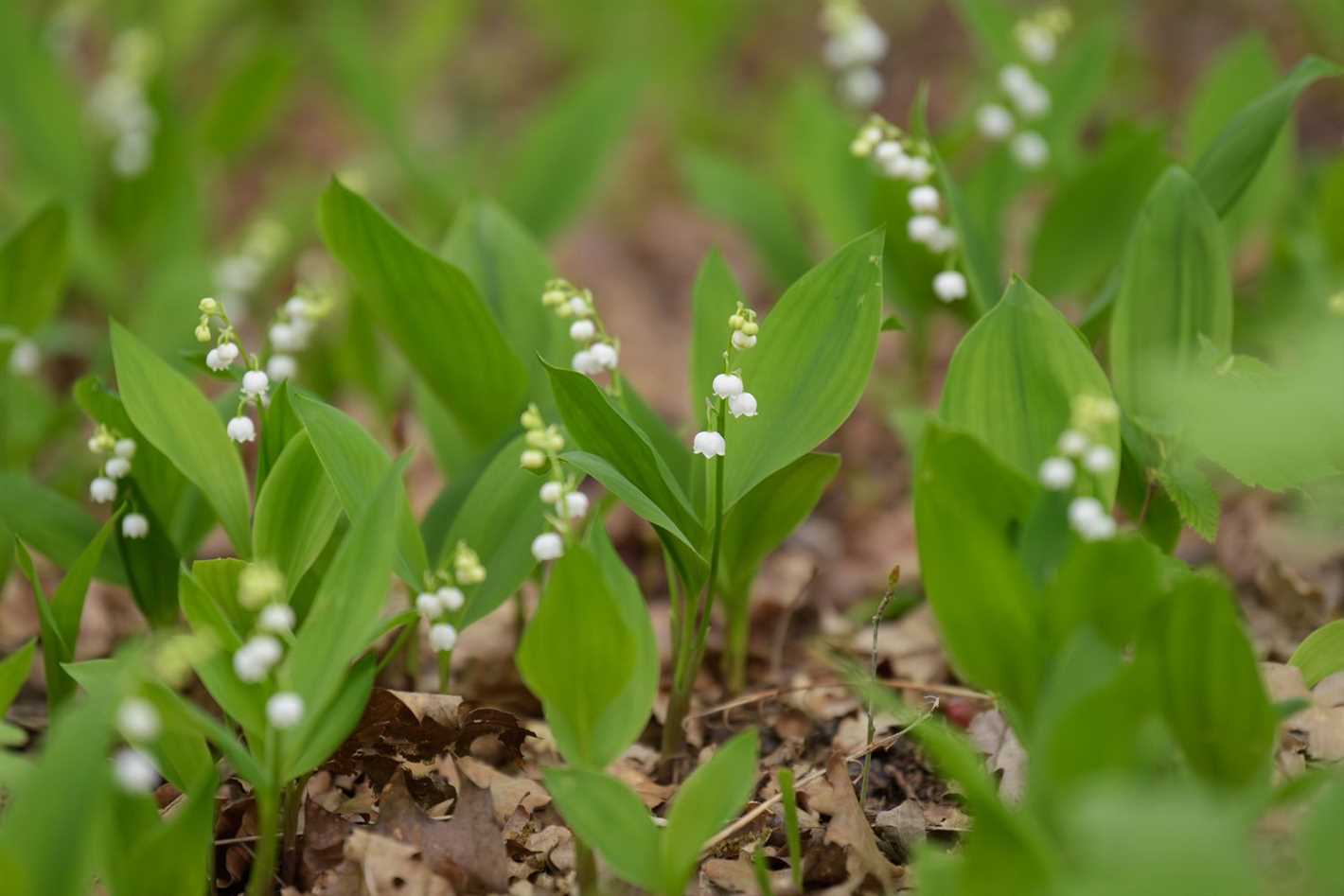

Lily of the Valley, also known by its scientific name Convallaria majalis, is a small, fragrant flowering plant that has a long history and carries significant symbolism in various cultures around the world. The plant is native to temperate regions of Europe, Asia, and North America.
Historical Significance
Lily of the Valley has been cultivated and admired for centuries. It is believed to have been a favorite of the ancient Greeks and Romans, who associated it with love and happiness. The plant was often used in religious ceremonies and festivals, and its delicate white flowers were seen as a symbol of purity and innocence.
In medieval Europe, Lily of the Valley was considered a powerful medicinal herb. It was used to treat a variety of ailments, including heart conditions, epilepsy, and poisoning. The plant’s healing properties were attributed to its sweet scent and delicate appearance.
Cultural Symbolism
Lily of the Valley holds great symbolism in many cultures. In Christian tradition, the plant is associated with the Virgin Mary and is often called “Our Lady’s Tears” or “Mary’s Tears.” It is said that the tears shed by Mary during the crucifixion of Jesus transformed into these delicate flowers.
In the language of flowers, Lily of the Valley symbolizes humility, sweetness, and the return of happiness. It is often used in wedding bouquets and represents the hope of a happy marriage. The plant’s small, bell-shaped flowers are also believed to bring luck, especially on May Day in some European countries.
Modern Uses
Today, Lily of the Valley continues to be a popular choice for gardens and floral arrangements. Its dainty nodding flowers and sweet fragrance make it a favorite among gardeners and flower enthusiasts. The plant is also used in perfumes, soaps, and other beauty products due to its delicate scent.
| Historical Significance | Cultural Symbolism |
|---|---|
| History of cultivation and medicinal use | Association with the Virgin Mary and weddings |
| Favorite of ancient Greeks and Romans | Symbol of humility, sweetness, and luck |
| Used in religious ceremonies and festivals | Hope for a happy marriage |
In conclusion, Lily of the Valley has a rich history and carries deep symbolism in various cultures. Its delicate beauty and sweet fragrance continue to captivate people around the world, making it a beloved plant for gardens and special occasions.
Cultivation of Lily of the Valley
Lily of the Valley, or Convallaria majalis, is a popular perennial plant known for its fragrant bell-shaped flowers and lush green leaves. It is native to Europe and has been cultivated for centuries for its beauty and fragrance. Here are some tips for successfully growing Lily of the Valley in your garden:
1. Choosing a Location
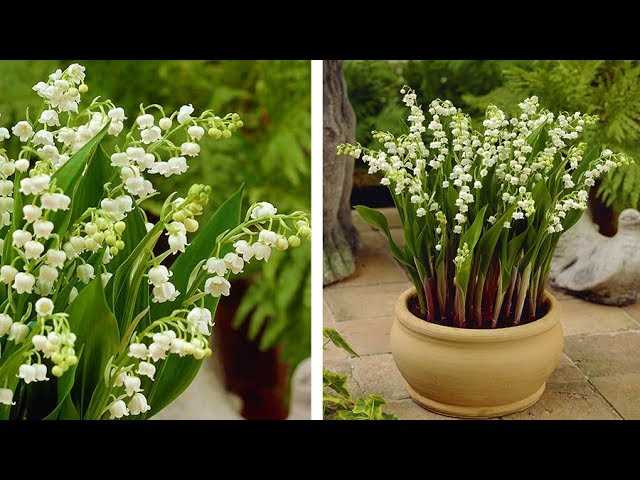

Lily of the Valley prefers a partially shaded area with moist, well-draining soil. It can tolerate full shade but may not bloom as profusely. Avoid planting it in direct sunlight as this can scorch the leaves.
2. Planting
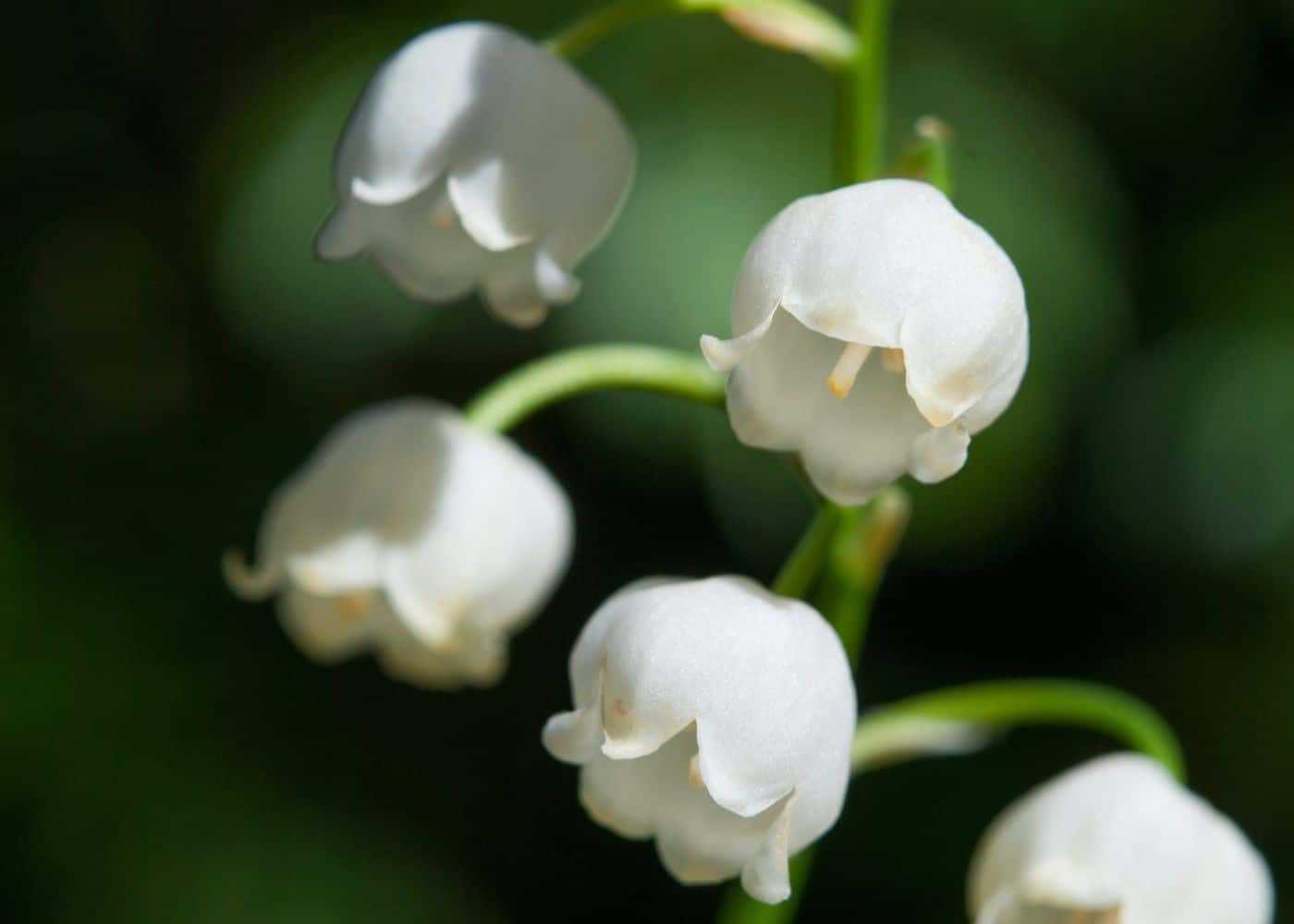

Plant Lily of the Valley in the spring or fall, when the soil is cool and moist. Dig a hole about 4-6 inches deep and place the rhizomes or pips about 2-3 inches apart. Cover them with soil, firm it gently, and water thoroughly.
3. Watering
Keep the soil evenly moist, but not waterlogged. Lily of the Valley prefers regular watering, especially during dry spells. Mulching around the plants can help retain moisture in the soil.
4. Fertilizing
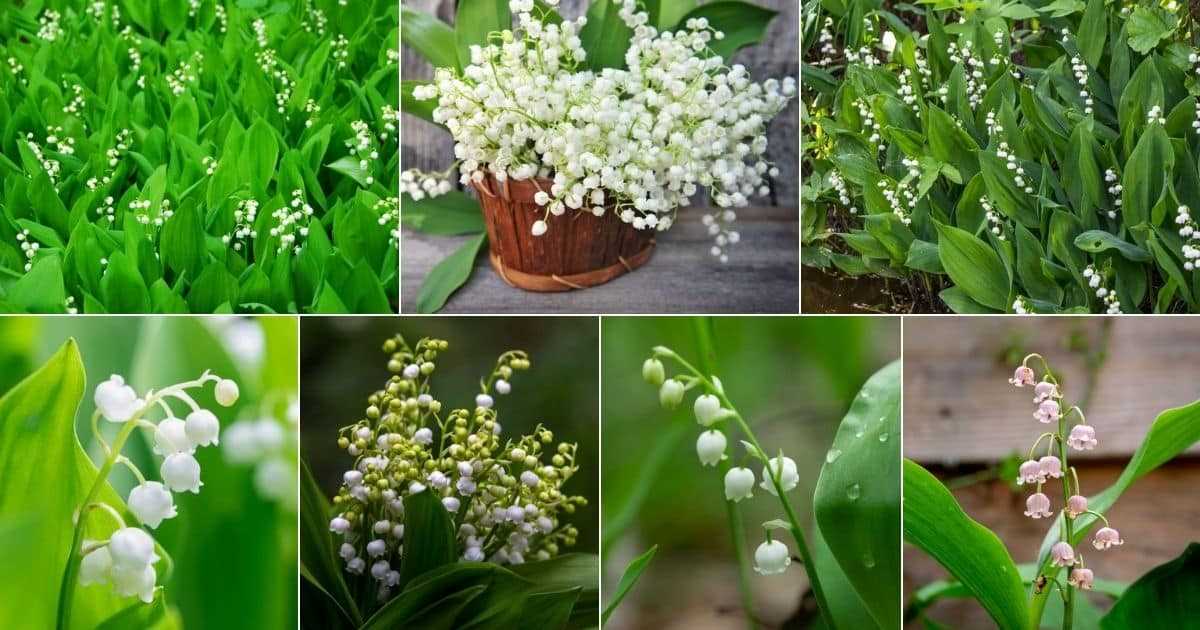

Lily of the Valley doesn’t require much fertilization. However, you can apply a balanced slow-release fertilizer in early spring to promote healthy growth.
5. Pruning
After the blooms fade in late spring or early summer, you can trim back the foliage if desired. This can help tidy up the garden and prevent the plant from becoming invasive.
6. Scattered Planting
Lily of the Valley can spread rapidly and form dense colonies over time. If you prefer a more controlled growth, consider planting them in containers or using barriers to prevent their spread.
- Ensure the container has drainage holes at the bottom to prevent waterlogging.
- Use a well-draining potting mix and plant the rhizomes at the same depth as in the garden.
- Place the container in a partially shaded area and water regularly.
- Divide the rhizomes every 2-3 years to control their spread.
7. Propagation
Lily of the Valley can be propagated through division or from seed. Dividing the rhizomes in early spring or fall is the most common method. Carefully dig up the clumps, separate the rhizomes, and replant them in desired locations.
8. Common Pests and Diseases
Lily of the Valley is generally resistant to pests and diseases. However, aphids, slugs, and snails may occasionally cause damage. Use organic pest control methods such as handpicking or applying insecticidal soap if necessary.
By following these cultivation tips, you can enjoy the beauty and fragrance of Lily of the Valley in your garden for years to come.
Choosing the Right Location
The success of growing Lily of the Valley largely depends on choosing the right location for planting. Here are some important factors to consider when selecting a spot:
Light
- Lily of the Valley prefers partial shade to full shade. It does not do well in direct sunlight, especially during the hottest part of the day.
- Choose a location that receives only a few hours of direct sunlight or is shaded by trees or structures for most of the day.
Soil
- Lily of the Valley prefers moist, well-draining soil. It does not tolerate soggy or waterlogged conditions.
- The ideal soil pH for Lily of the Valley is slightly acidic, around 6.0 to 7.0.
- If your soil is heavy clay or tends to retain water, consider amending it with organic matter such as compost or peat moss to improve drainage.
Climatic Conditions
- Lily of the Valley is native to temperate regions and prefers cool, mild climates.
- It is hardy in USDA zones 2-7, but can tolerate some heat in cooler regions.
- Ensure that the location you choose offers the appropriate climate conditions for the plant to thrive.
Protection
- Consider planting Lily of the Valley near a fence, wall, or other structures that can provide some protection from strong winds.
- Strong winds can damage the delicate stems and flowers of Lily of the Valley.
By considering these factors and choosing the right location, you can create an ideal growing environment for your Lily of the Valley plants.
Preparing the Soil for Lily of the Valley
Proper soil preparation is important for the successful cultivation of lily of the valley plants. By providing the right growing conditions, you can ensure that your plants thrive and produce beautiful blooms year after year.
1. Soil Type
Lily of the valley prefers well-draining soil that is rich in organic matter. It is best to mix in compost or well-rotted manure to improve the soil’s fertility. This will provide the necessary nutrients for the plants to grow strong and healthy.
2. Soil pH
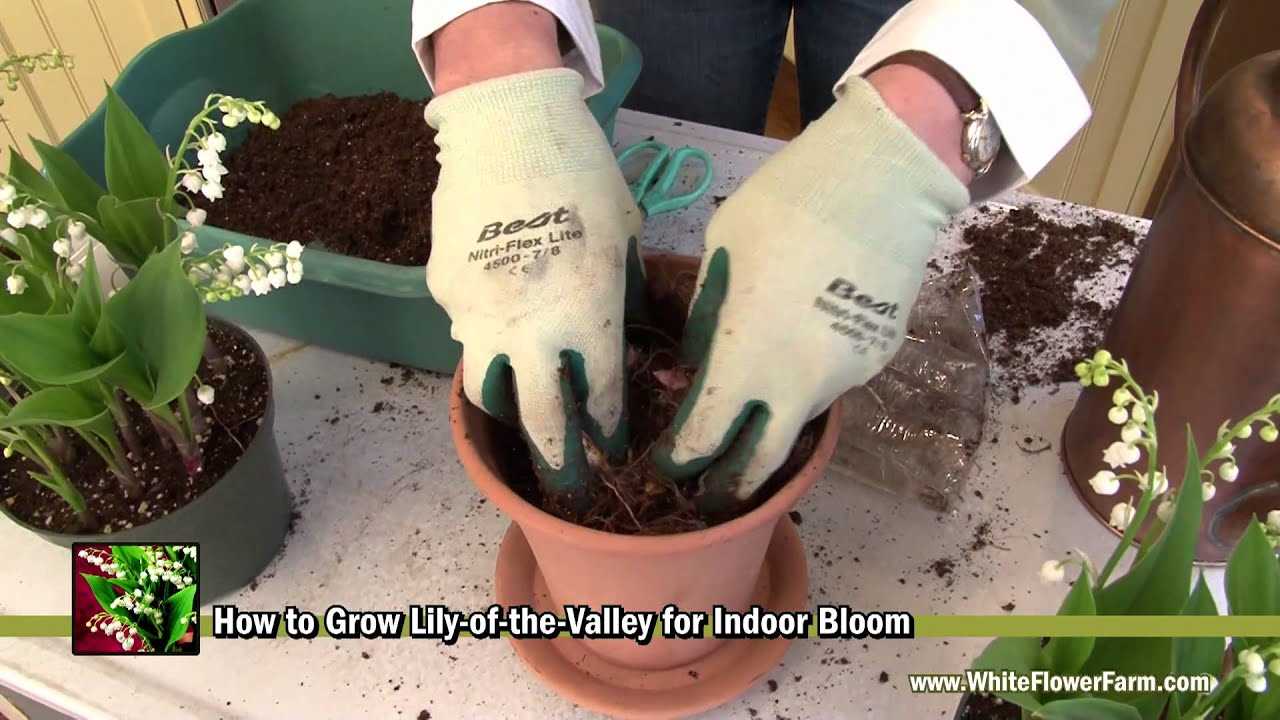

The ideal soil pH for lily of the valley is slightly acidic to neutral, ranging from 6.0 to 7.0. You can test the pH of your soil using a pH testing kit, which is available at most garden centers. If the soil pH is too high or too low, you can adjust it by adding amendments such as sulfur or lime.
3. Site Selection
Choose a site that receives partial to full shade for planting lily of the valley. These plants prefer shaded areas, as direct sunlight can scorch the leaves and affect their growth. Avoid planting them in areas with full sun, as this can lead to leaf burn and reduced flowering.
4. Soil Preparation
Before planting, remove any weeds or grass from the planting area. Loosen the soil to a depth of about 8 inches (20 cm) using a garden fork or tiller. Break up any clumps of soil and remove any rocks or debris. This will create a loose and well-aerated planting bed for the lily of the valley plants.
5. Organic Matter
Spread a layer of compost or well-rotted manure over the soil surface. This will help improve the soil’s structure, drainage, and fertility. Work the organic matter into the top few inches of soil using a garden fork or tiller.
6. Mulching
Apply a layer of organic mulch, such as shredded leaves or straw, around the lily of the valley plants. This will help conserve moisture, suppress weed growth, and regulate soil temperature. Make sure to leave a small space around the base of each plant to prevent rotting.
By following these steps to prepare the soil for lily of the valley, you will create an ideal growing environment for these beautiful plants. With the right soil conditions, your lily of the valley will thrive and add a touch of elegance to your garden.
Care of Lily of the Valley
Lily of the Valley (Convallaria majalis) is a beautiful and delicate flowering plant that requires specific care to thrive in the garden. Follow these guidelines to ensure your Lily of the Valley plants grow healthy and produce abundant blooms.
Light
Lily of the Valley prefers partial to full shade. Plant them in an area of the garden that receives dappled sunlight or morning sun and afternoon shade. Too much direct sunlight can scorch their leaves, so avoid planting them in full sun.
Soil
The ideal soil for Lily of the Valley is moist and rich in organic matter. They prefer slightly acidic soil with a pH between 5.0 and 7.0. Ensure the soil is well-drained to prevent waterlogging, as excessive moisture can cause root rot.
Watering
Keep the soil consistently moist but not waterlogged. Water Lily of the Valley plants regularly, especially during dry spells. Avoid overwatering, as it can lead to root problems. Mulching around the plants can help retain moisture in the soil.
Fertilization
Apply a balanced slow-release fertilizer in early spring, before new growth appears. This will provide the necessary nutrients for healthy growth and abundant blooms. Follow the fertilizer manufacturer’s instructions for application rates.
Dividing and Propagation
Lily of the Valley can form dense clumps over time, and it’s recommended to divide the plants every few years to maintain their vigor. Dig up the clumps in early spring or late autumn and separate the rhizomes. Replant the divided clumps in well-prepared soil.
Pests and Diseases
Lily of the Valley is generally resistant to pests and diseases. However, they can occasionally be affected by slugs, snails, and aphids. Monitor the plants regularly and take appropriate measures if any pests are spotted. Avoid overhead watering to prevent fungal diseases.
Winter Care
Provide some winter protection for Lily of the Valley plants in colder regions. Apply a layer of mulch around the base of the plants to insulate the soil and protect the rhizomes from freezing temperatures.
| Care | Needs |
|---|---|
| Sunlight | Partial to full shade |
| Soil | Moist, well-drained, slightly acidic |
| Watering | Consistently moist, not waterlogged |
| Fertilization | Balanced slow-release fertilizer in spring |
| Propagation | Divide rhizomes every few years |
| Pests and Diseases | Monitor for slugs, snails, aphids, and fungal diseases |
| Winter Care | Provide mulch for insulation in colder regions |
By providing the right care, your Lily of the Valley plants will grace your garden with their charming flowers and delightful fragrance for years to come.
Watering and Moisture Requirements
Lily of the Valley plants have moderate moisture requirements and prefer consistently moist soil. Proper watering is essential for their growth and overall health.
General Guidelines
- Water the plants regularly during the growing season, especially during dry spells.
- Avoid overwatering, as excessive moisture can lead to root rot.
- Check the soil moisture before watering by sticking your finger about an inch into the soil. If it feels dry, it’s time to water.
- Water the plants at the base, avoiding overhead watering to prevent the leaves from getting wet, as wet leaves can invite diseases.
Watering Newly Planted Lily of the Valley
When first planting Lily of the Valley, it’s crucial to establish the root system by keeping the soil consistently moist.
- Water the soil thoroughly after planting to settle it around the roots.
- Continue to water regularly, keeping the soil evenly moist but not waterlogged.
- Apply mulch around the plants to help retain moisture and prevent weeds
Watering Established Lily of the Valley
Once Lily of the Valley plants are established, their moisture requirements are generally low to moderate.
- Water the plants when the soil starts to dry out, typically every 1-2 weeks.
- Provide a deep, thorough watering instead of frequent light watering.
- During hot, dry periods, you may need to increase the frequency of watering.
Rainfall Considerations
If your region receives sufficient rainfall, you may not need to water your Lily of the Valley plants as frequently. However, it’s still essential to monitor the soil moisture regularly and provide supplemental water during extended dry periods.
Moisture Retention Techniques
To help retain moisture in the soil and reduce watering frequency, you can utilize the following techniques:
- Apply a layer of organic mulch around the plants to help retain moisture and control weeds.
- Group Lily of the Valley plants together to create a microclimate that traps moisture.
- If growing in containers, choose a pot with good drainage but also ensure it retains enough moisture for the plants.
Conclusion
Providing adequate moisture is crucial for the health and vitality of Lily of the Valley plants. By following these watering guidelines and regularly monitoring the soil moisture, you can ensure their successful growth and beautiful blooms.
Fertilizing and Mulching
Lily of the Valley plants are generally low-maintenance and do not require a lot of fertilizing. However, a balanced fertilizer can help promote healthy growth and blooming.
It is best to fertilize Lily of the Valley plants in the early spring, before new growth begins. Use a slow-release granular fertilizer with a balanced NPK ratio, such as 10-10-10 or 14-14-14. Follow the instructions on the fertilizer package for the correct application rate.
Apply the fertilizer evenly around the plants, taking care not to let it touch the leaves or stems. Water the plants after fertilizing to help the nutrients penetrate the soil and reach the roots.
In addition to fertilizing, mulching can also benefit Lily of the Valley plants. Mulch helps to retain moisture in the soil, suppresses weed growth, and regulates soil temperature.
Types of Mulch
There are several types of mulch that can be used for Lily of the Valley plants:
- Organic mulch, such as shredded bark, wood chips, or compost, provides nutrients to the soil as it breaks down.
- Straw or hay can also be used as mulch, but be careful to avoid using hay that contains weed seeds.
- Plastic mulch can help conserve moisture and warm the soil, but it does not provide any nutrients to the soil.
Applying Mulch
To apply mulch, spread a layer of mulch around the base of the Lily of the Valley plants. Make sure to leave a small gap around the stems to prevent rotting.
Aim for a mulch layer that is around 2-3 inches thick. This will help to keep the soil moist and regulate temperature without smothering the plants.
Replenish the mulch as needed throughout the growing season to maintain the desired thickness.
With proper fertilization and mulching, your Lily of the Valley plants will thrive and reward you with their fragrant blooms.
Propagation of Lily of the Valley
Propagating lily of the valley is a relatively straightforward process that can be done through division or by collecting and planting the plant’s seeds. Here are some methods you can try:
1. Division
Lily of the valley can be divided in early spring or late summer when the foliage is still green. Follow these steps:
- Carefully dig up the clump of lily of the valley, taking care not to damage the roots.
- Separate the plants into smaller clumps by gently pulling them apart or using a sharp knife.
- Replant the divisions immediately, making sure to place them at the same depth as they were previously growing.
2. Planting Seeds
While it may take longer to grow lily of the valley from seeds compared to division, it can still be a rewarding process. Here’s how to do it:
- Harvest mature seeds from the plant’s berries in late summer or early autumn.
- Remove the flesh of the berries by soaking them in water and gently rubbing them.
- Dry the seeds thoroughly before planting.
- Sow the seeds in a well-draining potting mix, covering them lightly with soil.
- Place the pot in a cool location, such as a refrigerator or unheated basement, for a few months to simulate winter conditions.
- After this cold stratification period, move the pot to a warm and bright location to encourage germination.
- Keep the soil consistently moist and provide adequate light for the seedlings to grow.
Whether you choose to propagate lily of the valley through division or by planting seeds, it’s important to provide the newly propagated plants with the proper growing conditions. Remember to water them regularly and provide them with partial shade for optimal growth.
Questions and Answers:
What are the ideal conditions for cultivating Lily of the Valley?
Lily of the Valley thrives in moist, well-drained soil and prefers partial shade. It can tolerate full shade but may produce fewer flowers.
Can Lily of the Valley grow in dry soil?
No, Lily of the Valley requires moist soil to grow properly. Dry soil may cause the plant to wither and die.
When is the best time to plant Lily of the Valley?
The best time to plant Lily of the Valley is in the early spring or fall. This gives the plant enough time to establish its roots before the frost sets in or the heat of summer arrives.
How do you propagate Lily of the Valley?
Lily of the Valley can be propagated through division. In the spring or fall, dig up the plant and separate the rhizomes, making sure each division has at least one leaf and some roots attached. Replant the divisions in a well-prepared bed.
Do lily of the valley plants need any special care?
Lily of the Valley plants are relatively low-maintenance. They benefit from regular watering, especially during dry periods. Mulching around the plants can help retain moisture in the soil. It’s also a good idea to remove any dead or yellowing leaves to keep the plant looking tidy.
Can Lily of the Valley be grown in containers?
Yes, Lily of the Valley can be grown in containers. Use a well-draining potting mix and ensure the container has drainage holes. Place the container in a shaded spot and water regularly to keep the soil moist.







